Kaposvár's history
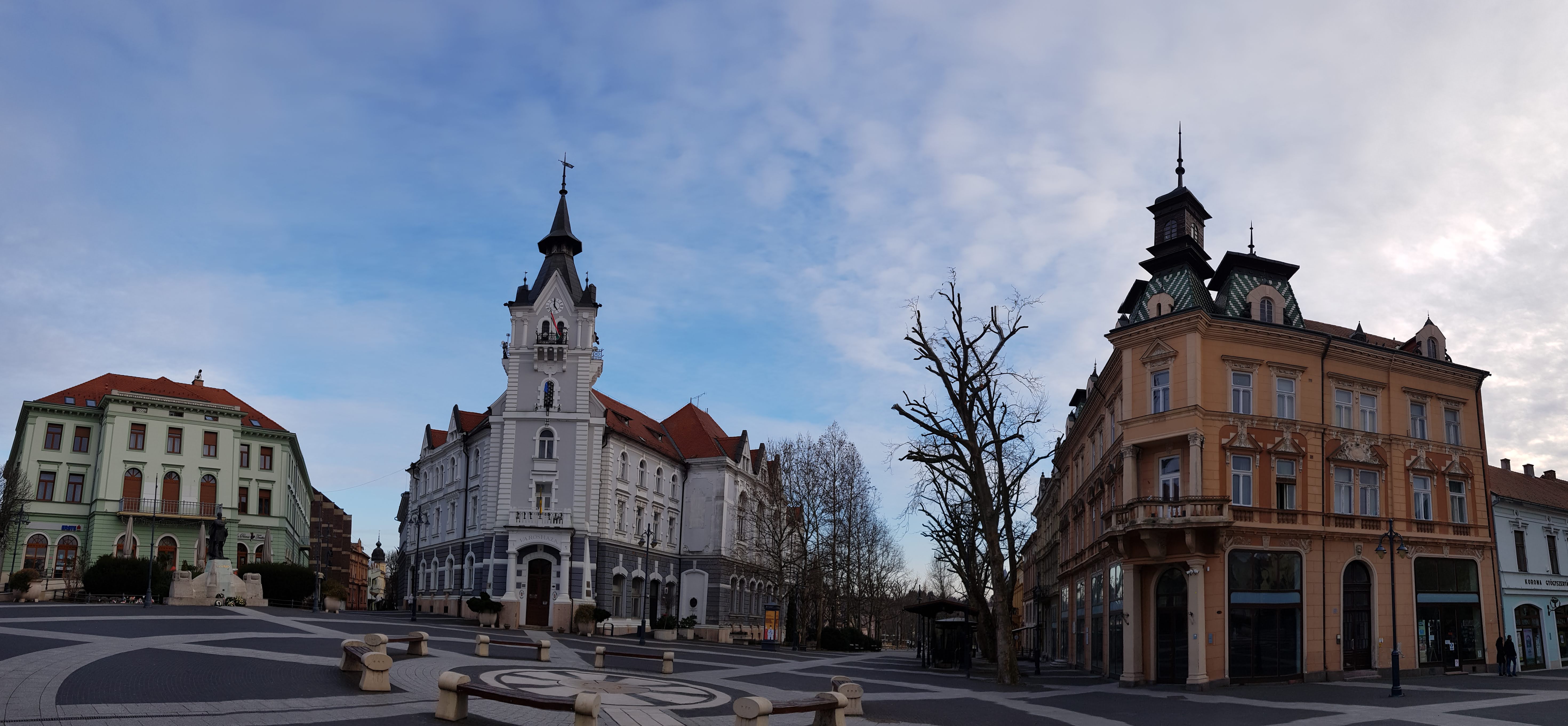
The area of today's Kaposvár was populated from times immemorial, celtics, romans and avar tribes changed themselves during the millenniums, and about in 900 the conquering Hungarians found slav and german villages in this land. After the conquest of the Hungarians the tribe of Koppány settled down in Somogy.
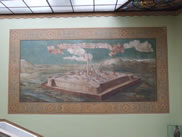 The name of the settlement - which comes from the world "kapu" (gate) - appeared first in 1009, in Saint Stephen's memorandum of association, which fixed the boarders of Pécs's bishopric. In 1061 Atha (Ottó), the lord lieutenant of Somogy founded a benedictine monastery, in which consecration King Salamon and Prince Géza took part too. Béla the IVth after the Mongol invasion of Hungary made built strong castles, and Kaposvár's first castle was built during his reign in the years of 1200. But despite it, the monastery and considerable settlement around the castle didn't come into existence, once because the settlement was avoided by the commercial roads and on the other hand because the different tribes fights didn't favour the development.
The name of the settlement - which comes from the world "kapu" (gate) - appeared first in 1009, in Saint Stephen's memorandum of association, which fixed the boarders of Pécs's bishopric. In 1061 Atha (Ottó), the lord lieutenant of Somogy founded a benedictine monastery, in which consecration King Salamon and Prince Géza took part too. Béla the IVth after the Mongol invasion of Hungary made built strong castles, and Kaposvár's first castle was built during his reign in the years of 1200. But despite it, the monastery and considerable settlement around the castle didn't come into existence, once because the settlement was avoided by the commercial roads and on the other hand because the different tribes fights didn't favour the development.
Eventually the period of local fights was closed by the turkish gunfire. In the decades, after the battle of Mohács the neighbourhood was prowled by the troops of Szulejmán. The Turkishes occupied the kaposi castle in September of 1555 and it was followed by a 131 year old Turkish occupation. During this time Kaposvár - despite it became a small administrative center - it worked rather as a military camp. Finally the christian troops liberate the castle of Kapos.
After the years of thraldom, it seemed the development could start. The church was built up and the first guild was founded. But the beginning of the 18th century brought suffering and blows to the settlement instead the development. The Habsburgs in 1702 destroyed to the earth the kaposi castle. And the ruins were desolated during the Rákóczi war of independence.
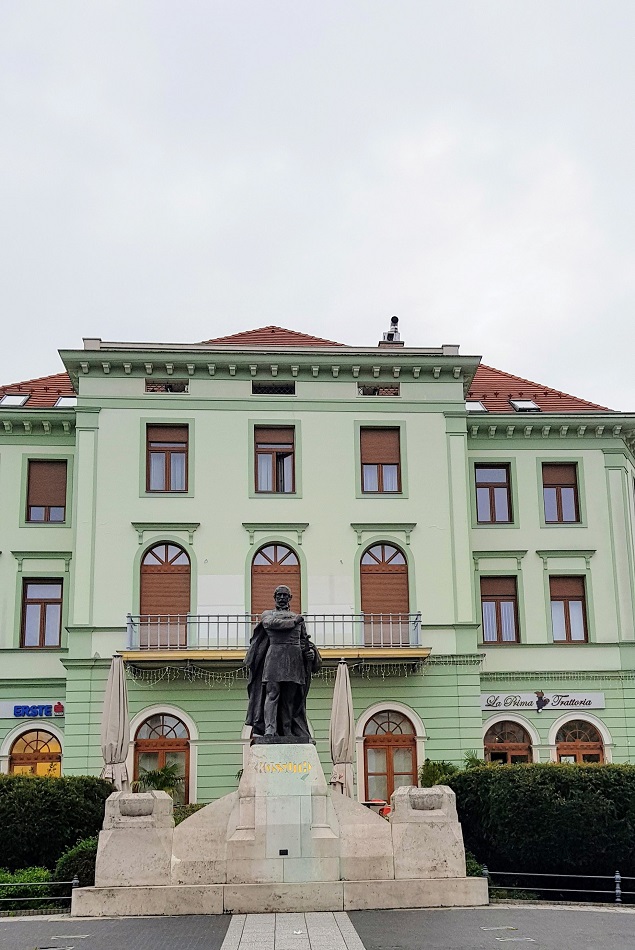 But in the ruins some decades later a new country town was built. The resettlement of the city after the destruction, is in connection to the name of the Esterházy family and the fortification of its economic and administrative rule. The city got the right for holding markets in 1703, in 1715 the first school was built up, in 1730 there was already 132 houses and a new church was ready in 1748. In 1750 for good Kaposvár became the chief town of a county. More and more artisans and traders moved into the city and the number of the citizens during six decades doubled by 1780.
But in the ruins some decades later a new country town was built. The resettlement of the city after the destruction, is in connection to the name of the Esterházy family and the fortification of its economic and administrative rule. The city got the right for holding markets in 1703, in 1715 the first school was built up, in 1730 there was already 132 houses and a new church was ready in 1748. In 1750 for good Kaposvár became the chief town of a county. More and more artisans and traders moved into the city and the number of the citizens during six decades doubled by 1780.
But more important was that, so from the 19th century significant medical and cultural institutions were founded in Kaposvár. The "kis gymnasium" (the predecessor of the present Táncsics Mihály Secondary Grammar School), the Arany Oroszlán Pharmacy (Gold Lion) and the general hospital were built up, and we can found the name of Dániel Berzsenyi among the name of the county library's readers, which was founded in 1816. The small county town started to become a civic town. The city center evolved with the county hall, the building of the town hall, the church, the Korona Hotel and the Dorottya-house. The National Casino and the Horse Raiser Company were set up, and the visitors of Kaposvár could walk on paved roads. Earl István Széchenyi was elected to the first freeman of the town in 1835.
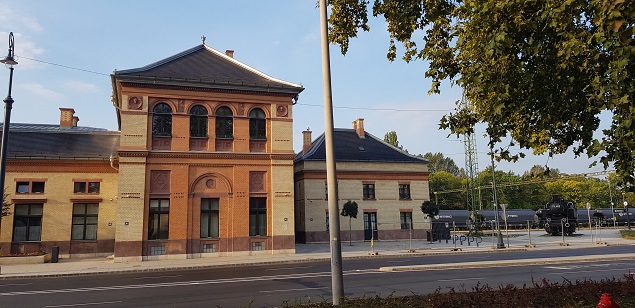 The revolution and war of independence of 1848/49 didn't avoid the chief town of Somogy county. The citizens voted for the revolution. Although the kaiser's groups occupied the city for a short time, they couldn't supple the insurrectionist Kaposvár. The local citizens still sacrificed the bell of the church to make cannon. The sheriff of Kaposvár, the later commissary, Gáspár Noszlopy with its territorial army, liberated Somogy county for three months. However the war of independence tumbled and Kaposvár got again under foreign occupation. Although the oppression slowed down but couldn't stop the development. The post office opened, and the country's first soap factory was founded. And thanks for an Austrian growth brewer János Donner, a new city district - the present Donner - started to built in the South side of river Kapos. The local public life bloomed, after the casino the set up of the chorus, and then the first weekly newspaper in 1866, the Somogy started on its way with its editor, the famous journalist István Roboz. One of Kaposvár's most blossing time was after the conciliation. Thanks for mostly the railway building: until that time there were railroads only in the winger of the county, and the first engine arrived to Kaposvár in 1872. It opened the possibilities for the artisans and traders and the development of the city's economic life. In the years of 1890 the development of the infrastructure gave new movement to the city's development. Short train ways were built and they made the city for railway interchange. The railway network became wider, there were tryings to bring in the electricity, a telegraph office was created and they set up telephone connection with Pécs. At the beginning of the 1900 years there were already eleven big industrial companies in the city, among them the sugar factory from the autumn 1894, which was then one of the most significant plant in the country, and the MIR Malom grain processing plant. By this time the agricultural character of the city reduced. But there was another, new project: with the growth of the population's number the city became larger and larger. The first important planned city development is in connection with István Németh, who was the major of the city between 1895 and 1911. For the citizens their environment became more and more important and thanks for the Kaposvári Szépítő Egyesület (Kaposvári Beautifying Association), the city became then a real "flowered city".
The revolution and war of independence of 1848/49 didn't avoid the chief town of Somogy county. The citizens voted for the revolution. Although the kaiser's groups occupied the city for a short time, they couldn't supple the insurrectionist Kaposvár. The local citizens still sacrificed the bell of the church to make cannon. The sheriff of Kaposvár, the later commissary, Gáspár Noszlopy with its territorial army, liberated Somogy county for three months. However the war of independence tumbled and Kaposvár got again under foreign occupation. Although the oppression slowed down but couldn't stop the development. The post office opened, and the country's first soap factory was founded. And thanks for an Austrian growth brewer János Donner, a new city district - the present Donner - started to built in the South side of river Kapos. The local public life bloomed, after the casino the set up of the chorus, and then the first weekly newspaper in 1866, the Somogy started on its way with its editor, the famous journalist István Roboz. One of Kaposvár's most blossing time was after the conciliation. Thanks for mostly the railway building: until that time there were railroads only in the winger of the county, and the first engine arrived to Kaposvár in 1872. It opened the possibilities for the artisans and traders and the development of the city's economic life. In the years of 1890 the development of the infrastructure gave new movement to the city's development. Short train ways were built and they made the city for railway interchange. The railway network became wider, there were tryings to bring in the electricity, a telegraph office was created and they set up telephone connection with Pécs. At the beginning of the 1900 years there were already eleven big industrial companies in the city, among them the sugar factory from the autumn 1894, which was then one of the most significant plant in the country, and the MIR Malom grain processing plant. By this time the agricultural character of the city reduced. But there was another, new project: with the growth of the population's number the city became larger and larger. The first important planned city development is in connection with István Németh, who was the major of the city between 1895 and 1911. For the citizens their environment became more and more important and thanks for the Kaposvári Szépítő Egyesület (Kaposvári Beautifying Association), the city became then a real "flowered city".
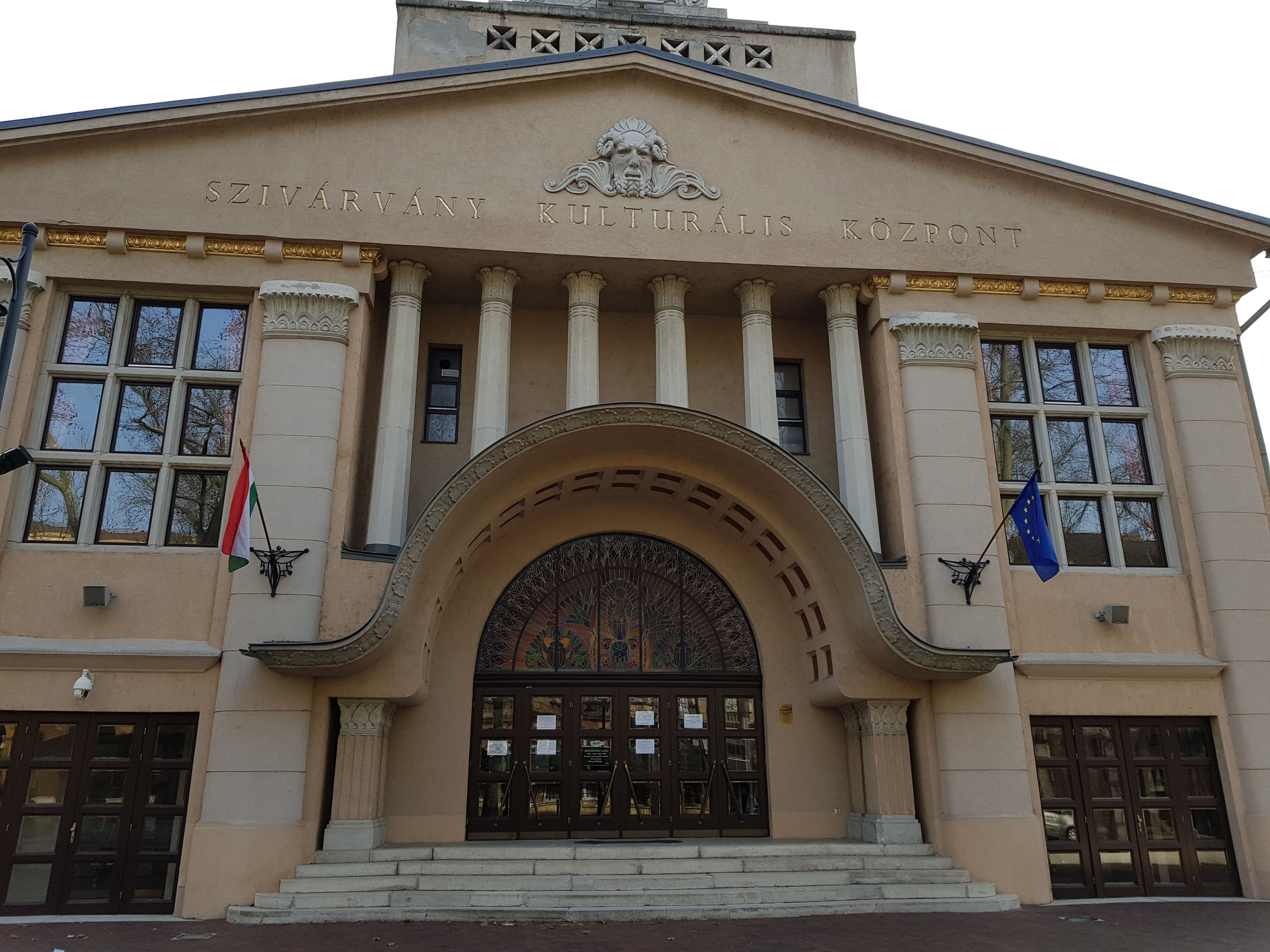 The representatives of the culture had to keep step with the economic development. By that time the city has the right to keep high-school graduation in its secondary grammar school, there was a convent, a seminary and beside other institutions a day-nursery too. The first daily newspaper of the county, the Somogyi Hírlap came out from the printing-house in April 1904. In September 1911 the stone theater of Kaposvár was opened, which was then the country's biggest and modernest theater, where the most popular actors and actresses played. And a new cultural trend born, the film: in the first decade of the 20th century there were already three cinemas. Newer and newer cultural and art associations were founded. A lot of famous artists settled down there, like József Rippl-Rónai, Endre Ady, István Fekete and Aurél Bernáth. The years of development ended by the I. World War, which from - like from the important events of the Hungarian history - the citizens, the soldiers of Kaposvár took their part too. But the war brought hardship and dissatisfaction to the city. In the public life there were strikes and strengthening left-wing ideas. The ideas of the "Őszirózsás" Revolution found place in the public life. The first directorium and agricutural association were born here and the plants were socialized. But the revolution fell, the war, the years of terror and Trianon brought recession which from it could stand up only in the years of 1930. The city stood up slowly. Although the role of the railway transport diminished, but the bus transport started and in 1929 the airport built up in Taszár. Kaposvár from an industrial city became a commercial-officer city and the transformation of the cityscape reflected it. It wasn't just a flowered, but a clean, pleasant, civic town with restaurants, cafés and active cultural life. Thanks for József Adorján, Ferenc Csik and a number of olympic sportmen the world got to know the city's sportlife.
The representatives of the culture had to keep step with the economic development. By that time the city has the right to keep high-school graduation in its secondary grammar school, there was a convent, a seminary and beside other institutions a day-nursery too. The first daily newspaper of the county, the Somogyi Hírlap came out from the printing-house in April 1904. In September 1911 the stone theater of Kaposvár was opened, which was then the country's biggest and modernest theater, where the most popular actors and actresses played. And a new cultural trend born, the film: in the first decade of the 20th century there were already three cinemas. Newer and newer cultural and art associations were founded. A lot of famous artists settled down there, like József Rippl-Rónai, Endre Ady, István Fekete and Aurél Bernáth. The years of development ended by the I. World War, which from - like from the important events of the Hungarian history - the citizens, the soldiers of Kaposvár took their part too. But the war brought hardship and dissatisfaction to the city. In the public life there were strikes and strengthening left-wing ideas. The ideas of the "Őszirózsás" Revolution found place in the public life. The first directorium and agricutural association were born here and the plants were socialized. But the revolution fell, the war, the years of terror and Trianon brought recession which from it could stand up only in the years of 1930. The city stood up slowly. Although the role of the railway transport diminished, but the bus transport started and in 1929 the airport built up in Taszár. Kaposvár from an industrial city became a commercial-officer city and the transformation of the cityscape reflected it. It wasn't just a flowered, but a clean, pleasant, civic town with restaurants, cafés and active cultural life. Thanks for József Adorján, Ferenc Csik and a number of olympic sportmen the world got to know the city's sportlife.
The national policy darkened more and more, the "happy peacetimes", the left-wing ideas and later the wind of the World War reached the city. Almost one thousand citizens died or disappeared during the fights. In 1944 the city twice got under foreign occupation. In March the German soldiers filed in Kaposvár. The jewishes were deported, most of them died in Auschwitz. The frontline arrived here on 2nd December. The soviet groups changed the Germans. The life could start fast in the city because fortunately, the fights didn't cause remarkable destruction. Kaposvár always said to be an "insurrectionist" city and it chose again the policy of restart. The parties formed, like the Communist Party, but the Country Party had the biggest side. After the communist received the power the socialisations finished and the new kind of industrial expansion started, the socialist industrialisation. Its result was for example the textil factory, meat plant, electricity factory. But the small industries disappeared. In 1956 Kaposvár joined the revolution but on 4th November the soviet tanks clunked through the city's streets: the fall of the revolution and the sanctions had a lot of victim in Kaposvár. Between them the famous born of Kaposvár, the revolution's martyr prime minister, Imre Nagy.
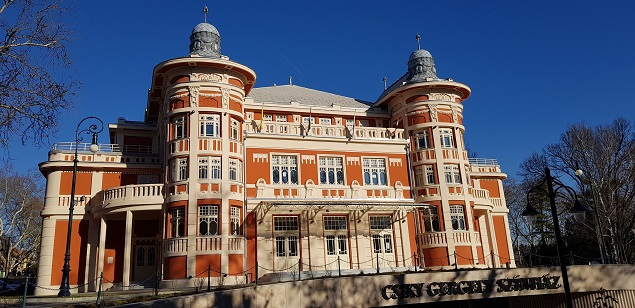 The chief town of the county woke up hardly after the flop. In the next decade the development of the industry and the flat construction started. From 1970 new subtopias built. The city's administrative boarder flared: in 1950 Kaposszentjakab, in 1970 Kaposfüred and Toponár and in 1973 Töröcske joined the city. In 1971 the training-school and the agricultural technical institute became college. In the field of science and culture many person made famous the name of the city, not just in the country but beyond the borders too:
The chief town of the county woke up hardly after the flop. In the next decade the development of the industry and the flat construction started. From 1970 new subtopias built. The city's administrative boarder flared: in 1950 Kaposszentjakab, in 1970 Kaposfüred and Toponár and in 1973 Töröcske joined the city. In 1971 the training-school and the agricultural technical institute became college. In the field of science and culture many person made famous the name of the city, not just in the country but beyond the borders too:
the Archives of Somogy County, the Gergely Csiky Theater, The Béla Vikár Choir, The Somogy Dance Group, and the Berzsenyi Company.
The crisis of the 80's, and the stop of the city's development made necessary changes. In the end of the decade - like so many times during its history - Kaposvár stood to the top of reforms. The maverick organisations were funded and a memorial tablet was put on Imre Nagy's house, as the symbol of new times. In 1990 Kaposvár became the center of the county and in 1993 an episcopal seat.
And what is coming into our mind about this city with its rough history, crisis, destroy but always renewable town? A lot of thing.
Today Kaposvár - with its university, education system, and thousands of students - is a real school town. With the well-kept plazas, streets, colourful flowerbeds it is the town of flowers.
With its rippling wells it is the city of waterworks. With its lively cultural life, rich art programmes it is the city of festivals and the city of painters. With its wonderfully reborn downtown with the feeling of peaceful, mediterranean atmosphere, the chief town of the county became a real European city.
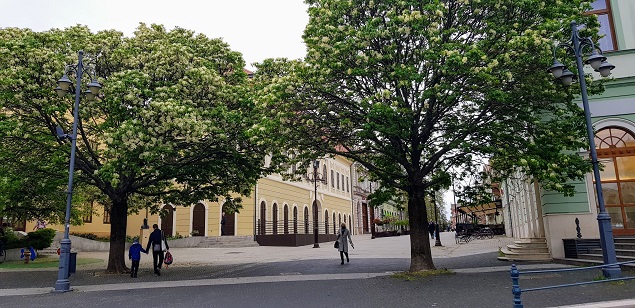

 The name of the settlement - which comes from the world "kapu" (gate) - appeared first in 1009, in Saint Stephen's memorandum of association, which fixed the boarders of Pécs's bishopric. In 1061 Atha (Ottó), the lord lieutenant of Somogy founded a benedictine monastery, in which consecration King Salamon and Prince Géza took part too. Béla the IVth after the Mongol invasion of Hungary made built strong castles, and Kaposvár's first castle was built during his reign in the years of 1200. But despite it, the monastery and considerable settlement around the castle didn't come into existence, once because the settlement was avoided by the commercial roads and on the other hand because the different tribes fights didn't favour the development.
The name of the settlement - which comes from the world "kapu" (gate) - appeared first in 1009, in Saint Stephen's memorandum of association, which fixed the boarders of Pécs's bishopric. In 1061 Atha (Ottó), the lord lieutenant of Somogy founded a benedictine monastery, in which consecration King Salamon and Prince Géza took part too. Béla the IVth after the Mongol invasion of Hungary made built strong castles, and Kaposvár's first castle was built during his reign in the years of 1200. But despite it, the monastery and considerable settlement around the castle didn't come into existence, once because the settlement was avoided by the commercial roads and on the other hand because the different tribes fights didn't favour the development.  But in the ruins some decades later a new country town was built. The resettlement of the city after the destruction, is in connection to the name of the Esterházy family and the fortification of its economic and administrative rule. The city got the right for holding markets in 1703, in 1715 the first school was built up, in 1730 there was already 132 houses and a new church was ready in 1748. In 1750 for good Kaposvár became the chief town of a county. More and more artisans and traders moved into the city and the number of the citizens during six decades doubled by 1780.
But in the ruins some decades later a new country town was built. The resettlement of the city after the destruction, is in connection to the name of the Esterházy family and the fortification of its economic and administrative rule. The city got the right for holding markets in 1703, in 1715 the first school was built up, in 1730 there was already 132 houses and a new church was ready in 1748. In 1750 for good Kaposvár became the chief town of a county. More and more artisans and traders moved into the city and the number of the citizens during six decades doubled by 1780. The revolution and war of independence of 1848/49 didn't avoid the chief town of Somogy county. The citizens voted for the revolution. Although the kaiser's groups occupied the city for a short time, they couldn't supple the insurrectionist Kaposvár. The local citizens still sacrificed the bell of the church to make cannon. The sheriff of Kaposvár, the later commissary, Gáspár Noszlopy with its territorial army, liberated Somogy county for three months. However the war of independence tumbled and Kaposvár got again under foreign occupation. Although the oppression slowed down but couldn't stop the development. The post office opened, and the country's first soap factory was founded. And thanks for an Austrian growth brewer János Donner, a new city district - the present Donner - started to built in the South side of river Kapos. The local public life bloomed, after the casino the set up of the chorus, and then the first weekly newspaper in 1866, the Somogy started on its way with its editor, the famous journalist István Roboz. One of Kaposvár's most blossing time was after the conciliation. Thanks for mostly the railway building: until that time there were railroads only in the winger of the county, and the first engine arrived to Kaposvár in 1872. It opened the possibilities for the artisans and traders and the development of the city's economic life. In the years of 1890 the development of the infrastructure gave new movement to the city's development. Short train ways were built and they made the city for railway interchange. The railway network became wider, there were tryings to bring in the electricity, a telegraph office was created and they set up telephone connection with Pécs. At the beginning of the 1900 years there were already eleven big industrial companies in the city, among them the sugar factory from the autumn 1894, which was then one of the most significant plant in the country, and the MIR Malom grain processing plant. By this time the agricultural character of the city reduced. But there was another, new project: with the growth of the population's number the city became larger and larger. The first important planned city development is in connection with István Németh, who was the major of the city between 1895 and 1911. For the citizens their environment became more and more important and thanks for the Kaposvári Szépítő Egyesület (Kaposvári Beautifying Association), the city became then a real "flowered city".
The revolution and war of independence of 1848/49 didn't avoid the chief town of Somogy county. The citizens voted for the revolution. Although the kaiser's groups occupied the city for a short time, they couldn't supple the insurrectionist Kaposvár. The local citizens still sacrificed the bell of the church to make cannon. The sheriff of Kaposvár, the later commissary, Gáspár Noszlopy with its territorial army, liberated Somogy county for three months. However the war of independence tumbled and Kaposvár got again under foreign occupation. Although the oppression slowed down but couldn't stop the development. The post office opened, and the country's first soap factory was founded. And thanks for an Austrian growth brewer János Donner, a new city district - the present Donner - started to built in the South side of river Kapos. The local public life bloomed, after the casino the set up of the chorus, and then the first weekly newspaper in 1866, the Somogy started on its way with its editor, the famous journalist István Roboz. One of Kaposvár's most blossing time was after the conciliation. Thanks for mostly the railway building: until that time there were railroads only in the winger of the county, and the first engine arrived to Kaposvár in 1872. It opened the possibilities for the artisans and traders and the development of the city's economic life. In the years of 1890 the development of the infrastructure gave new movement to the city's development. Short train ways were built and they made the city for railway interchange. The railway network became wider, there were tryings to bring in the electricity, a telegraph office was created and they set up telephone connection with Pécs. At the beginning of the 1900 years there were already eleven big industrial companies in the city, among them the sugar factory from the autumn 1894, which was then one of the most significant plant in the country, and the MIR Malom grain processing plant. By this time the agricultural character of the city reduced. But there was another, new project: with the growth of the population's number the city became larger and larger. The first important planned city development is in connection with István Németh, who was the major of the city between 1895 and 1911. For the citizens their environment became more and more important and thanks for the Kaposvári Szépítő Egyesület (Kaposvári Beautifying Association), the city became then a real "flowered city". The representatives of the culture had to keep step with the economic development. By that time the city has the right to keep high-school graduation in its secondary grammar school, there was a convent, a seminary and beside other institutions a day-nursery too. The first daily newspaper of the county, the Somogyi Hírlap came out from the printing-house in April 1904. In September 1911 the stone theater of Kaposvár was opened, which was then the country's biggest and modernest theater, where the most popular actors and actresses played. And a new cultural trend born, the film: in the first decade of the 20th century there were already three cinemas. Newer and newer cultural and art associations were founded. A lot of famous artists settled down there, like József Rippl-Rónai, Endre Ady, István Fekete and Aurél Bernáth. The years of development ended by the I. World War, which from - like from the important events of the Hungarian history - the citizens, the soldiers of Kaposvár took their part too. But the war brought hardship and dissatisfaction to the city. In the public life there were strikes and strengthening left-wing ideas. The ideas of the "Őszirózsás" Revolution found place in the public life. The first directorium and agricutural association were born here and the plants were socialized. But the revolution fell, the war, the years of terror and Trianon brought recession which from it could stand up only in the years of 1930. The city stood up slowly. Although the role of the railway transport diminished, but the bus transport started and in 1929 the airport built up in Taszár. Kaposvár from an industrial city became a commercial-officer city and the transformation of the cityscape reflected it. It wasn't just a flowered, but a clean, pleasant, civic town with restaurants, cafés and active cultural life. Thanks for József Adorján, Ferenc Csik and a number of olympic sportmen the world got to know the city's sportlife.
The representatives of the culture had to keep step with the economic development. By that time the city has the right to keep high-school graduation in its secondary grammar school, there was a convent, a seminary and beside other institutions a day-nursery too. The first daily newspaper of the county, the Somogyi Hírlap came out from the printing-house in April 1904. In September 1911 the stone theater of Kaposvár was opened, which was then the country's biggest and modernest theater, where the most popular actors and actresses played. And a new cultural trend born, the film: in the first decade of the 20th century there were already three cinemas. Newer and newer cultural and art associations were founded. A lot of famous artists settled down there, like József Rippl-Rónai, Endre Ady, István Fekete and Aurél Bernáth. The years of development ended by the I. World War, which from - like from the important events of the Hungarian history - the citizens, the soldiers of Kaposvár took their part too. But the war brought hardship and dissatisfaction to the city. In the public life there were strikes and strengthening left-wing ideas. The ideas of the "Őszirózsás" Revolution found place in the public life. The first directorium and agricutural association were born here and the plants were socialized. But the revolution fell, the war, the years of terror and Trianon brought recession which from it could stand up only in the years of 1930. The city stood up slowly. Although the role of the railway transport diminished, but the bus transport started and in 1929 the airport built up in Taszár. Kaposvár from an industrial city became a commercial-officer city and the transformation of the cityscape reflected it. It wasn't just a flowered, but a clean, pleasant, civic town with restaurants, cafés and active cultural life. Thanks for József Adorján, Ferenc Csik and a number of olympic sportmen the world got to know the city's sportlife. The chief town of the county woke up hardly after the flop. In the next decade the development of the industry and the flat construction started. From 1970 new subtopias built. The city's administrative boarder flared: in 1950 Kaposszentjakab, in 1970 Kaposfüred and Toponár and in 1973 Töröcske joined the city. In 1971 the training-school and the agricultural technical institute became college. In the field of science and culture many person made famous the name of the city, not just in the country but beyond the borders too:
The chief town of the county woke up hardly after the flop. In the next decade the development of the industry and the flat construction started. From 1970 new subtopias built. The city's administrative boarder flared: in 1950 Kaposszentjakab, in 1970 Kaposfüred and Toponár and in 1973 Töröcske joined the city. In 1971 the training-school and the agricultural technical institute became college. In the field of science and culture many person made famous the name of the city, not just in the country but beyond the borders too: 